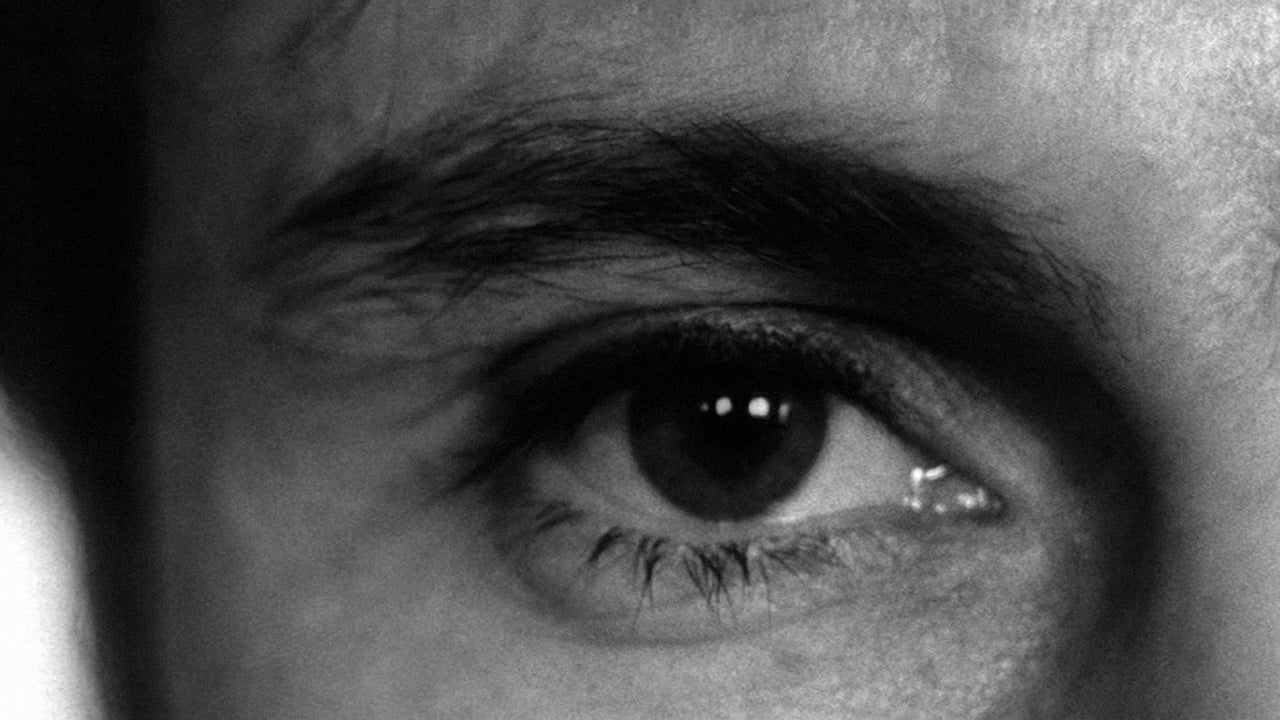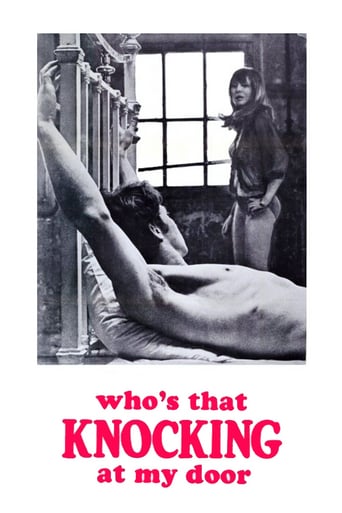

Such a frustrating disappointment
... View MoreFrom my favorite movies..
... View MoreIf you're interested in the topic at hand, you should just watch it and judge yourself because the reviews have gone very biased by people that didn't even watch it and just hate (or love) the creator. I liked it, it was well written, narrated, and directed and it was about a topic that interests me.
... View MoreThis is one of the best movies I’ve seen in a very long time. You have to go and see this on the big screen.
... View More"Who's that knocking at my door" is an excellent first film by Martin Scorsese, with a first half of great level and a second half with some irregularities and that for that reason does not have the same high level of the first. The influences of the French "nouvelle vague" are more than evident in this first work of Scorsese, more concretely the first films of Jean-Luc Godard, of the first half of the decade of 60, notably the nonlinear narrative, the style of the dialogues, the scenes "non-sense", the multiple cinematic "honors" (references to films "the searchers", "the man who shot liberty valance", "rio bravo"), artistic (references to actors John Wayne and Lee Marvin) and even musicals (references to Percy Sledge and others). Even considering these (good) influences, Scorsese's style and themes are well-grounded in his first film: psychological analysis of a man disintegrated from society, the marginality of the streets, a fatal woman, the religion, and so on. The choice of songs is also remarkable, which has become a "mark" in Scorsese's films. Harvey Keitel has his debut as an actor here and is excellent, he would collaborate with Scorsese in more films. The filmmaker's second film, "Boxcar Bertha", also notable, would emerge five years after this, in 1972, he also with notable influences of "nouvelle vague", but with a more regular and consistent narrative, although the theme of this "who's that knocking at my door" seems to me perhaps more powerful than that of "boxcar bertha".
... View MoreSet in New York, JR (played by Harvey Keitel) falls in love with a local girl (played by Zina Bethune). He wants to marry her and settle down but discovers that she was once a victim of rape. This raises all sorts of issues with JR.Martin Scorsese's first feature film. Not great - low production values, confusing jump-style direction, convoluted story that ultimately goes nowhere. Harvey Keitel, also making his feature film debut, is irritating in the lead role.Yet it bares some semblances of the later Scorsese trademarks. A degree of style, and story-building. Only worth watching from an historical perspective though.
... View MoreHere is Martin Scorsese's first feature film, and already, at a mere 25 years old in 1967, it is clear this young man had the determination and eye for visceral images, solid acting and a great ear for soundtracks. A rather raw and unpolished work, Who's That Knocking at My Door works in other ways such as the professionally-done editing by the great Thelma Schoonmaker, another future Scorsese collaborator. In the lead role is a very young Harvey Keitel, who plays the role of a young New York Italian very similar to the nature and style of Martin Scorsese himself. Clearly, there was a special bond between these two that continued for years.The plot, while at times veering wildly off track, focuses on a young couple attempting to overcome a difficult instance in the past that still looms over the future. With numerous Catholic images and references, this is one of the more explicitly religious of Scorsese's work but there is still a definitive drive behind everything. It is certainly worth watching for anyone who is interested in making their own film as well as any fan of Scorsese eager to know how he got to where he is today. Not always great, sometimes very powerful, this film still remains a strong piece of work that encompasses much of future themes Scorsese would come back to: Catholic guilt, relationships between street friends and the difficulties of romance.
... View MoreThe promise in crafting an independent feature film in America were richly and passionately exemplified by Who's That Knocking at My Door?, the very first feature directed by great Martin Scorsese. In 1967, whether or not anyone was ready for its individualism, it most certainly declared the onset of an essential new director of great consequence. Without a doubt, Scorsese's ardor-stained debut is at times too stylistically obvious, and it has clear flaws in form, however not a soul who feels real affection for cinema trusts that a perfect one will ever come. What we look forward to in its place are minute rewards of our fulfillment of dreams, love, humor and drama. Scorsese would move on to make Mean Streets, Raging Bull, The King of Comedy, GoodFellas, and several other movies that double, triple and demolish the impact this first work, completed with greatly impatient urgency when he was 25, but as with most independent debuts, nearly all of which overstep the bounds of self-indulgence anyway, which has yet to prove a problem for Scorsese, one must be objective with its flaws and not water down its lack of guile. The movies, in their urge to be fashionable, too repeatedly give us a false depiction of corrupt youth and juvenile delinquency and young romance, especially around the time of this film. In Who's That Knocking, Scorsese takes in hand the testosterone overpump of young men on a much more truthful level.Harvey Keitel plays J.R., a classic Italian-American on the streets. When he gets caught up with a resident girl, he fixes on settling down with her, except when he finds out that she was once raped, he cannot come to grips with it. More overtly associated with Catholic guilt than Scorsese's latter pieces, we see what materializes when Keitel's devout guilt complex pulls alongside him.As the movie opens, we cross the threshold into a society of young Italian-Americans in New York's Lower East Side who twiddle their thumbs and hang around and wonder without direction about where the action is. Sometimes they convene at someone's apartment to get drunk, watch Charlie Chan in a dazed state of bemusement and notice one of them who says he knows a couple of girls whom he could call. In this culture, still clearly under a suppressive ethical convention, there are only expected to be two kinds of girls: nice ones and sluts. You try to score with the sluts and you identify the nice girls on an unattainable, romanticized platform.The Harvey Keitel character of Who's That Knocking hails from this world but is not wholeheartedly of it. One day on the Staten Island ferry, he encounters a pleasant, polite blonde girl. They slip into a conversation that ranges John Wayne, reading French, and each other's aspirations. It is an excellently acted scene, a great deal of it shot in one take to keep hold of time as the two survive their awkwardness and agree upon a date.We steadily grasp that they come from dissimilar environments. She is a college student, reads a lot, lives on her own, and doesn't have a TV set. He is hugely nonetheless a part of the neighborhood bunch of hooligans. And then, eventually, when she tells him she isn't a virgin, he is unable to cope with this and he breaks it off. It is a very real concept, a guy not cultivated enough to break from the repressive reigns of his environment even in the face of love.Scorsese has always been skilled at directing delicate scenes, but this early he had certain difficulty with the more conspicuous moments. A scene late in the film, when Keitel goes to a church and kisses a nail on a crucifix and blood drips, is clumsily unnatural. For another absurdly incongruous scene, on the other hand, Scorsese does not merit fault. In order to acquire distribution for his film, he was expected to shoot and slot in a nudie scene to give the film a leg up from the sexploitation approach, therefore he shot a what could I suppose be described as a dream sequence, exhibiting his fantasy encounters with prostitutes. It has the very opposite of anything that could be remotely considered structural function in the movie, save for its acknowledged stylistic competence.Like most Scorsese pictures, this character study which in some sense follows the pattern of John Cassavetes's work, is in effect a director's film. Scorsese has come a long way since, having honed his craft to a point where he is able to engross his audience in a story without hiding, and the go-for-broke energy of his style is actually what makes his films so ceaselessly enthralling.
... View More